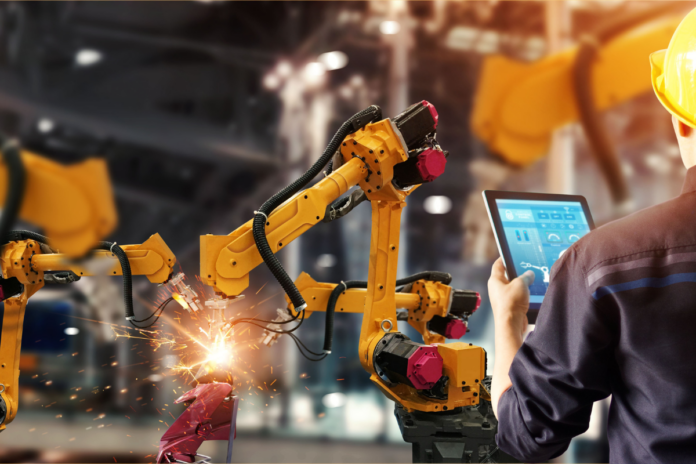Manufacturing has come a long way since its early days of purely manual labor, transitioning into something tech-driven and futuristic. What began with artisans and craftsmen has since progressed through various industrial revolutions. Each era introduced new levels of mechanization and automation, all aimed at improving efficiency, productivity, and precision. Today’s facilities are a far cry from their predecessors, embodying streamlined processes through an array of robots, complex machines, and computer-controlled operations. This transformation has set the stage for a new chapter in production: the smart factory. These state-of-the-art facilities are distinguished by their interconnected machinery and systems that communicate seamlessly, often using the internet of things to optimize various aspects of manufacturing.
The advent of smart factories marks a major leap in the industrial sector. It represents the mix of traditional manufacturing with cutting-edge technology, ushering in an age where artificial intelligence, big data, and machine learning are integral components of the production process. Smart factories not only increase efficiency but also provide greater flexibility and adaptability, enabling customized and detailed production runs that were previously impossible or impractical. The introduction of this level of automation has also garnered attention for its impact on the workforce, necessitating a shift in skills where operators must be tech-savvy and trained to work alongside sophisticated machinery.
The Concept of the Smart Factory
Imagine a manufacturing environment that intelligently connects production, design, and engineering processes. This is the essence of a smart factory, where systems and machinery are interlinked through the cutting-edge network of the internet, allowing seamless communication and real-time data analysis. In a smart factory, sensors and devices, such as a downtime tracker, collect and share data, which then guides machines to optimize production processes without significant human intervention.
The key features of such an environment include adaptability, automation, and improved communication, enhancing operational efficiency. These smart networks are further empowered by data analytics and machine learning, which sift through the vast streams of information to identify patterns, predict potential issues, and recommend adjustments. Through this, machine learning algorithms provide invaluable insights for decision-making and contribute to the unprecedented upsurge in productivity, quality, and dynamic responsiveness to market demands.
Automation Technologies Driving Change
Automation technologies are revolutionizing the way we manufacture products and maintain systems. One key factor in this transformation is robotics, offering unparalleled precision and efficiency in assembly lines and production processes. These mechanical marvels are now common fixtures in factories, where they perform a variety of complex tasks with unwavering consistency, driving productivity to new heights.
Complementing robotics is the advancement in sensor tech, which has made real-time data monitoring a key aspect of modern production. Sensors collect information about machine performance and environmental conditions, enabling swift adjustments and informed decision-making to ensure the maximum efficiency of operations. What’s more, AI further enhances the capabilities of these technologies. AI stands at the forefront of predictive maintenance and optimization, using algorithms to anticipate potential equipment failures before they happen, and dynamically optimizing processes to reduce waste and energy consumption.
Economic and Productivity Implications
The introduction of automation in manufacturing has fundamentally changed the production of goods, shifting economic patterns and enhancing workforce efficiency. By adopting sophisticated tech, businesses are able to refine operations, cut expenses, and improve ROI. Automation reduces instances of human error and accelerates production activities, enabling faster completion times and superior-quality products. This contributes to the ability of intelligent factories to attain economies of scale, where the cost per item can fall as output quantity rises, elevating overall efficiency.
At the same time, there is a massive change in workforce demands as the need for manual labor decreases in favor of technology-oriented roles. This change requires an adjustment of abilities within the labor market; job roles are becoming more specialized, necessitating employees who are proficient in overseeing and servicing technological systems and robotics. The trend towards automated sectors opens doors for job creation in technological fields while presenting hurdles for conventional manufacturing jobs—transforming economic structures at both local and international levels.
Challenges and Considerations for Implementation
When considering connected factories, there are challenges that must be addressed to ensure success. Cybersecurity risks are at the forefront, with an increasing number of industrial systems integrated with information technologies, the susceptibility to cyber-attacks heightens. Safeguarding these complex networks against unauthorized access and ensuring the data’s integrity becomes a top concern. In addition, the initial investment needed for upgrading factories with connected technologies can be considerable, prompting a thorough evaluation of the costs and benefits.
Alongside the financial aspects, the demand for skilled labor is urgent; workers proficient in managing and maintaining these advanced systems are in short supply, and the lag in required skill sets may act as an obstacle to efficient adoption. What’s more, the environmental consequences cannot be ignored. Automation and the integration of smart systems have the potential to amplify efficiency and decrease waste, which can lead to more eco-friendly practices. However, this shift must be managed with caution to prevent unintended detrimental effects on the environment, ensuring that the advantages of automation are harmonized with the commitment to sustainable operations.
Reimagining the Manufacturing Workforce
The manufacturing industry is undergoing a transformation that calls for a reimagined approach to its workforce. As technology advances, the terrain of manufacturing jobs necessitates a different set of skills than in the past, with a strong emphasis on digital literacy and the ability to work alongside sophisticated machinery. This shift challenges the traditional perception of manufacturing roles and highlights a growing need for education and training programs tailored to foster a new generation of workers.
These programs must not only focus on the technical competencies required to operate and maintain modern equipment but also develop soft skills such as problem-solving and collaboration, which are important in a dynamic industry. Additionally, despite the rise of automation, there remains an indispensable role for human oversight to ensure quality, innovation, and ethical practices within the industry. The manufacturing sector’s success in the future largely depends on its ability to seamlessly blend technological efficiencies with the unique capabilities of a skilled human workforce.
The manufacturing industry is advancing at a fast pace as machines and computer systems perform tasks with precision and efficiency once thought impossible. This modern revolution is embodied by the potential of smart factories—innovative environments where technology and digitization streamline production, reduce waste, and personalize products to unprecedented levels. These advancements promise to revolutionize the manufacturing scene, driving productivity and growth. But it’s important we move forward with a clear vision that values not only the machinery that propels us forward, but also the skilled workers who must adapt to the wave of change.








